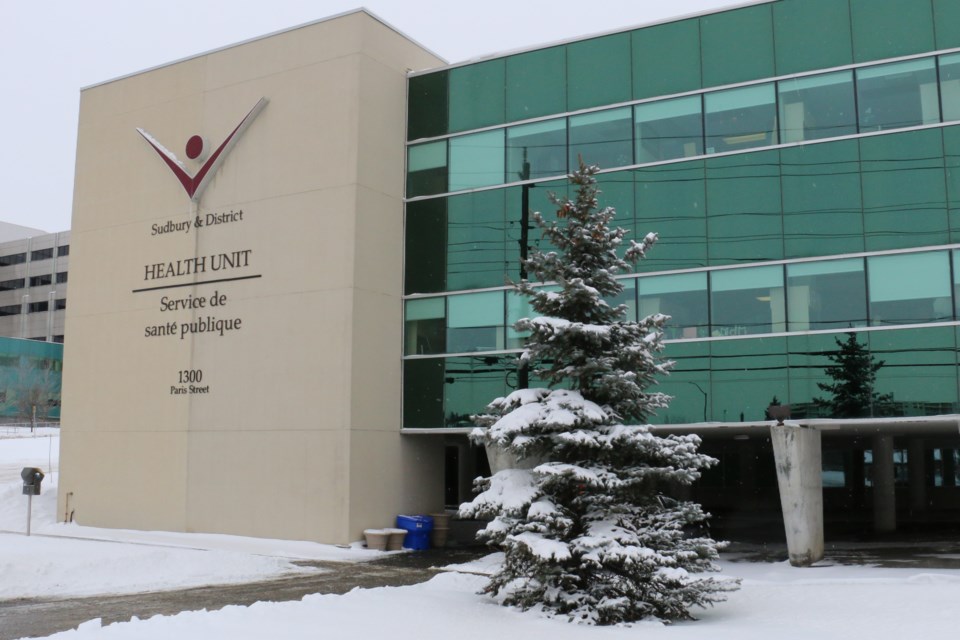GREATER SUDBURY, Ont. — Health officials in North Bay–Parry Sound's neighbouring district are increasingly concerned about the number of COVID-related deaths occurring in Sudbury and Manitoulin.
As of Tuesday, over half of all deaths attributed to COVID-19 in the Public Health Sudbury and Districts service area — 53 out of 92 total — have occurred since the beginning of December 2021..
In January alone, as the Omicron variant was prevalent, 37 COVID-19 deaths were reported. This represents 43 per cent of all area deaths attributed to COVID-19 reported since the beginning of the pandemic.
In the North Bay Parry Sound District Health Unit, as of Wednesday, there have been 16 deaths due to COVID-19 since the onset of the pandemic, with half of those — eight deaths — having been reported since the beginning of the year.
“We have definitely seen more deaths in recent weeks, and that is probably due to the highly transmissible nature of the Omicron variant,” says Dar Malaviarachchi, an epidemiologist at PHSD.
“Even though studies have shown that the Delta variant is associated with more severe outcomes, we are seeing a lot more deaths occur now due to the sheer volume of Omicron cases in the community.”
He adds it is impossible to calculate a COVID-19 death rate at this time because the Ontario government restricted access to publicly funded PCR testing on Dec. 31. Only those associated with the highest risk settings, including hospitals, long-term care homes, and congregate living facilities, are eligible. As a result, the number of active COVID-19 cases in the health unit’s service area is an underestimate of the true number of people with the virus.
“Public Health is estimating that the actual number of COVID-19 cases in the community could be five to 10 times higher than what we’re reporting right now in terms of case numbers,” says Malaviarachchi, adding it is more important than ever for local residents to follow public health measures and get vaccinated against COVID-19.
“Any death, no matter the cause, is a tragic outcome. It’s also one of the outcomes used to measure the impact of a disease, along with hospitalizations and intensive care unit (ICU) admissions.”
“Since the pandemic started, we have had four deaths that occurred in people under the age of 50, which represents five per cent of the overall deaths,” says Malaviarachchi, citing information current as of Feb. 2. “Looking at the most recent numbers, we have had two deaths in that age group since the beginning of January.”
The majority of COVID-related deaths in the region have been among individuals aged 80 and older, including 25 (68 per cent) who lost their lives in January alone. There have also been 12 deaths among those in their 70s, 13 among those in their 60s, and six among those in their 50s.
“Public Health also keeps track of whether COVID-19 was the underlying cause of death or whether COVID-19 was a contributing factor,” clarifies Malaviarachchi.
“There have been 68 local deaths since the beginning of the pandemic where COVID-19 was the underlying cause. We also had 18 deaths where COVID-19 was not the underlying cause but is considered a contributing factor.”
In those deaths where COVID-19 is considered a contributing factor, the underlying cause of death was often cardiovascular or respiratory disease. This includes infections like pneumonia and bronchitis.
Last month, there were 25 deaths for which COVID-19 was the underlying cause and 12 deaths for which COVID-19 was considered a contributing factor.
A number of COVID-19 deaths in the health unit’s service area have been linked to outbreaks in high-risk settings and in the community.
“There have been 39 deaths in long-term care and retirement homes since the pandemic started in addition to five in hospitals, seven in other outbreak settings, and 35 linked to outbreaks in the community,” Malaviarachchi says.
“Since the beginning of December, there were 26 deaths in long-term care and retirement homes which accounts for 55 per cent of all deaths associated with an outbreak.”
Vaccination against COVID-19 continues to be a protective factor against serious illness, hospitalization, and death adds Malaviarachchi.
“We are looking at really high vaccination rates in the Sudbury and Manitoulin districts for people aged 12 and older at 88.4 per cent,” he says.
Since March 2020, 59 (69 per cent) deaths in the health unit’s service area have been among unvaccinated individuals and 26 (30 per cent) have been among those who are fully vaccinated.
Only one death was reported among individuals who are partially vaccinated during that same period.
Malaviarachchi says there were 20 deaths among fully vaccinated residents and 17 deaths among unvaccinated residents in January.
Ontario’s chief medical officer of health reported more than 1,000 people died in Ontario due to COVID-19 in January.
“The important message is that vaccination makes a difference, especially when we’re talking about the proportion of deaths among vaccinated and unvaccinated populations,” he advises.
“People should get vaccinated if they haven’t already, and they should make sure to get their second dose if eligible. That’s even more important as we see an increase in deaths due to the Omicron variant.”
As Ontario continues to lift COVID-19 restrictions throughout the province, Malaviarachchi reiterates it’s important to continue following public health measures to prevent the spread of COVID-19.
“I know everyone is probably tired of hearing about it but be careful. If you have symptoms, avoid social gatherings and isolate right away,” he says.
“That’s going to help reduce the spread in the community and it will help protect school-aged children, as well, so that we can keep schools open for as long as we can.”
Colleen Romaniuk is a Local Journalism Initiative reporter at The Sudbury Star. The Local Journalism Initiative is made possible through funding from the federal government.
